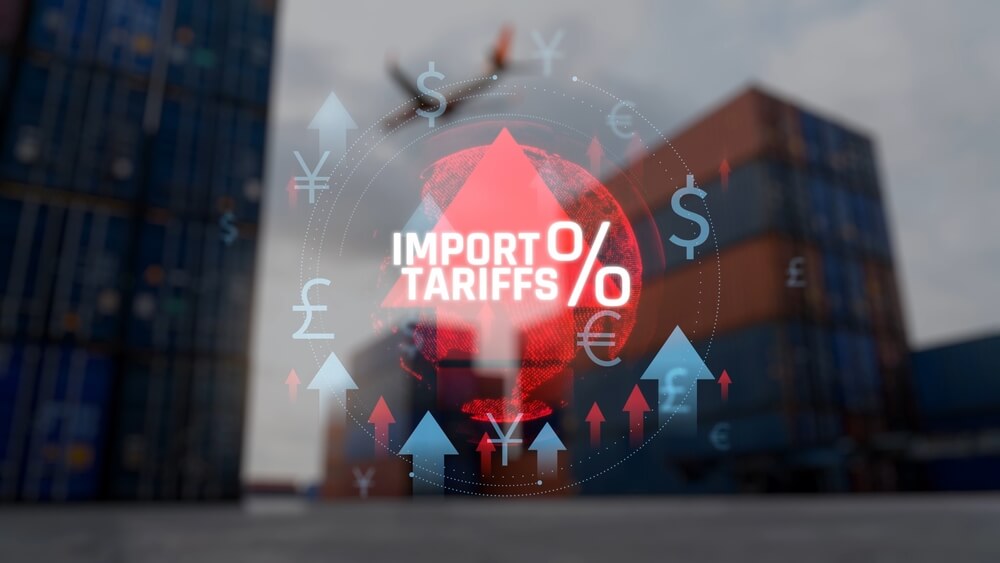Key Takeaways
- The political and regulatory landscape are shifting in 2025, which is influencing the approach that companies must take in navigating their ESG priorities.
- In the U.S., a new Executive Order has directed the nation’s withdrawal from the Paris Agreement and signaled a shift toward a rollback of environmental regulations.
- And in the European Union, changes are being proposed to make environmental reporting less bureaucratic and burdensome.
- Supply chain leaders must balance shifts in policy while maintaining the business resilience and environmental commitments that investors and consumers demand.
- Strategic recommendations to navigate these challenges include staying abreast of evolving regulations, and maintaining proactive and transparent communication with stakeholders.
- Investments in plastic pallets and sustainable technologies can also help companies remain competitive.
The approach that enterprises take in navigating their Environmental, Social, and Governance (ESG) priorities is undergoing a transformation in 2025, influenced both by political shifts in the United States and regulatory changes in the European Union. For supply chain leaders, these changes underscore the importance of maintaining a strong ESG strategy while adapting to new challenges and opportunities.
The term ESG was coined by the UN Global Impact initiative in a 2004 study titled Who Cares Wins. The concept has since gained considerable traction across numerous industries, and consumers are holding companies accountable for their ESG activities and progress toward environmental and sustainability goals.
A New Direction in the U.S.
In the United States, the new presidential administration has issued executive orders that mark a significant departure from previous ESG commitments. Executive Order 14162 directed the nation’s withdrawal from the Paris Agreement and other international climate commitments, signaling a shift toward a rollback of environmental regulations and the prioritization of fossil fuels and domestic energy production. Under the Paris Agreement, participating nations agreed to work together to cut greenhouse gas emissions and prevent global temperatures from rising above pre-industrial levels.
Balancing Sustainability and Competitiveness in the EU
The European Union, meanwhile, is reassessing its sustainability regulations to enhance its members’ global competitiveness. Although the EU remains committed to its target of net-zero emissions by 2050, the European Commission has proposed a “Simplification Omnibus” to cut red tape and reduce the bureaucratic burdens imposed on organizations by corporate sustainability reporting requirements. The aim of these changes is to make the European economy more prosperous and competitive while still balancing environmental objectives.
Implications for Supply Chain Managers
These developments require a nuanced approach to ESG strategy for leaders in the supply chain space — one that maintains competitiveness, addresses consumer expectations, and threads the needle of the evolving political landscape.
- Compliance Across Jurisdictions: Although United States policies are shifting, companies with a global footprint must remain mindful of international standards. For example, the EU’s Corporate Sustainability Reporting Directive and Corporate Sustainability Due Diligence Directive impose strict reporting requirements. Compliance is essential to avoiding repercussions.
- Investor and Consumer Expectations: Investor focus on environmental and labor practices in supply chains is intensifying. Moody’s 2025 ESG Outlook states: “Global focus on sustainable development will support the market, but heightened scrutiny of greenwashing, evolution in market standards and regulations, and a more complex environment, including political headwinds in some countries, will likely stifle growth.” And despite political shifts in the United States, consumers remain more likely to favor companies that operate sustainable, transparent, and ethical supply chains. This includes maintaining ethical sourcing and responsible labor practices as well as prioritizing environmental stewardship. Keeping up with ESG reporting commitments will continue to be vital for maintaining market competitiveness and brand loyalty.
- Operational Resilience: In addition to environmental sustainability, the integration of other ESG principles is widely considered a business imperative that is crucial for mitigating risk and maintaining supply chain resilience. Companies that embed sustainability initiatives into their operations, such as reducing their carbon footprint and ensuring ethical labor practices, are in a better position to navigate supply chain disruptions and maintain their competitive edge.
Strategic ESG Recommendations
To navigate evolving political narratives while still managing critical ESG priorities, supply chain professionals should consider a variety of key strategies:
- Remain informed about policy changes in operating regions. This ideally includes the establishment of a compliance team to monitor, interpret, and advise on new regulations as they are proposed or implemented.
- Maintain transparent and proactive communications with stakeholders on ESG initiatives, including investors, business partners, and customers. Transparency fosters trust and collaboration, especially as companies strive to adapt and stay flexible in a continually changing political climate.
- Invest in technologies and assets that promote and enhance organizational sustainability, including energy-efficient transportation and lightweight, recyclable plastic pallets.
- Brainstorm scenarios and establish business continuity and contingency plans that consider numerous regulatory and political scenarios. Understanding how the changing landscape potentially impacts the supply chain enables enterprises to make proactive adjustments and reduce their risks.
The political landscape will inevitably change and continually alter the emphasis on ESG. But the fundamental importance of these principles in supply chain management is not so easily shifted. Investor expectations, global standards, and the need for operational resilience and a competitive edge will continue to underscore the value, and necessity, of maintaining a comprehensive ESG strategy. Supply chain leaders that stay informed and adaptable will be best prepared to navigate this challenging environment effectively.
Is ESG reporting mandatory in the USA?
ESG reporting is not currently mandatory in the USA for all companies, but certain disclosures related to environmental and social risks may be required by the SEC for publicly traded firms. However, the regulatory landscape is evolving, and proposed rules could make climate-related disclosures more standardized and mandatory.
What are examples of ESG reporting?
Examples of ESG reporting include sustainability reports detailing carbon emissions, energy usage, labor practices, diversity metrics, board composition, and governance policies. Companies often use frameworks like the Global Reporting Initiative (GRI), SASB Standards, or TCFD to structure and disclose ESG data to stakeholders.
What are the 4 pillars of ESG?
While ESG stands for Environmental, Social, and Governance, some interpretations describe four pillars: environmental impact, social responsibility, corporate governance, and economic sustainability. These pillars help assess a company’s ethical and operational impact beyond financial performance, though the original ESG framework focuses on just three core dimensions.
Companies focused on environmental sustainability count on durable, lightweight iGPS plastic pallets for their shipping needs. iGPS pallets are recyclable and consume less fuel during transport. For more information, contact us at 1-800-884-0225, email a specialist at switch@igps.net, or visit our contact page.



